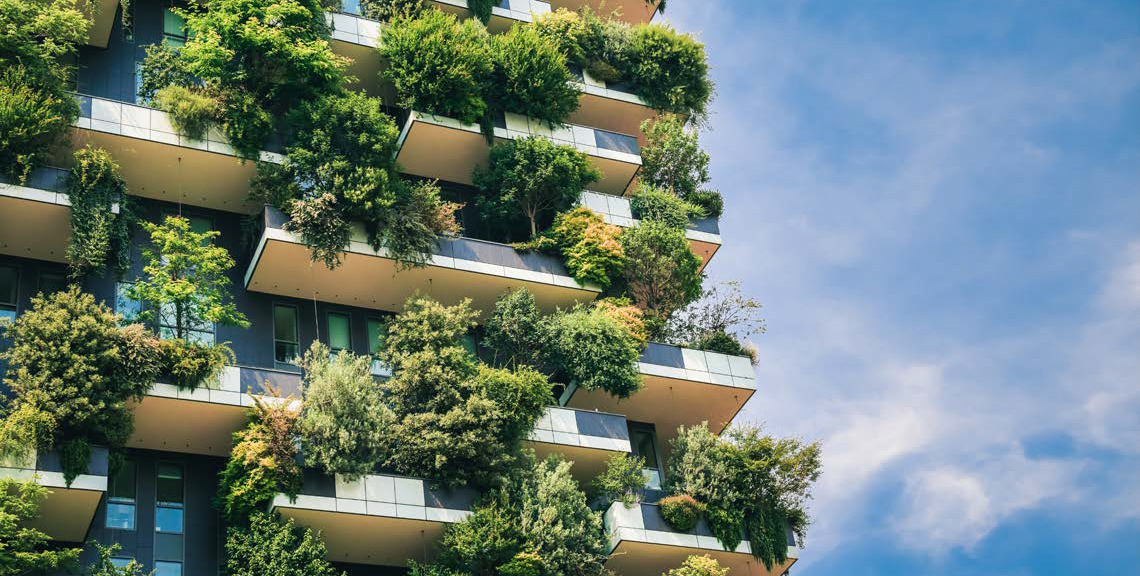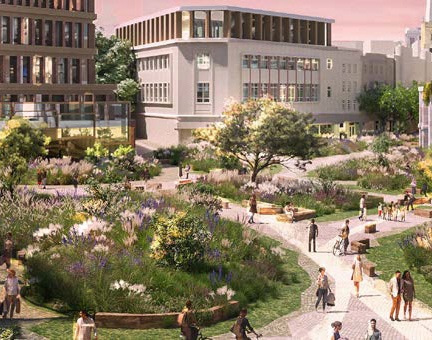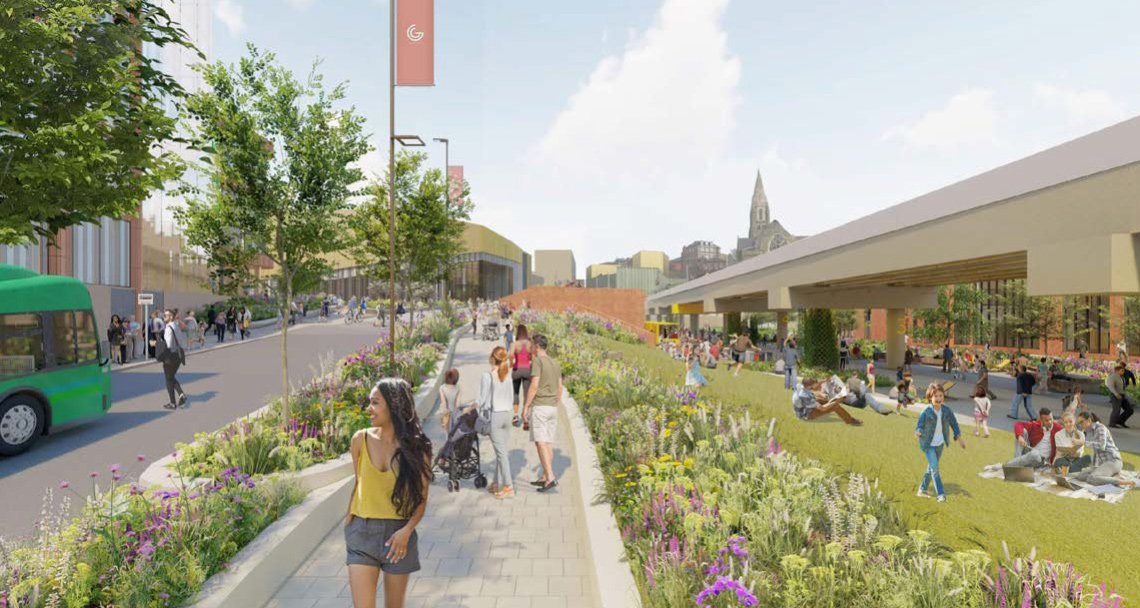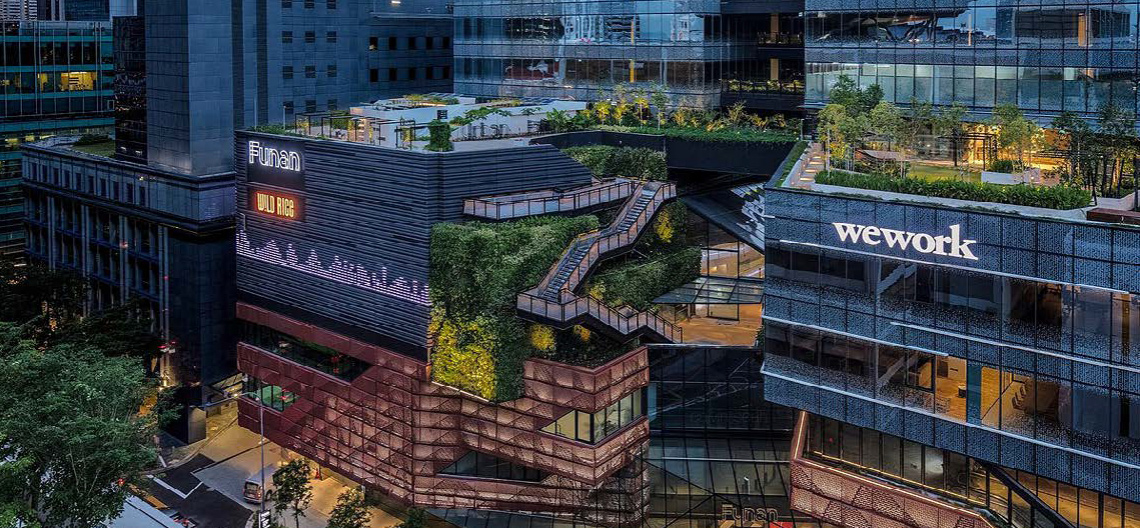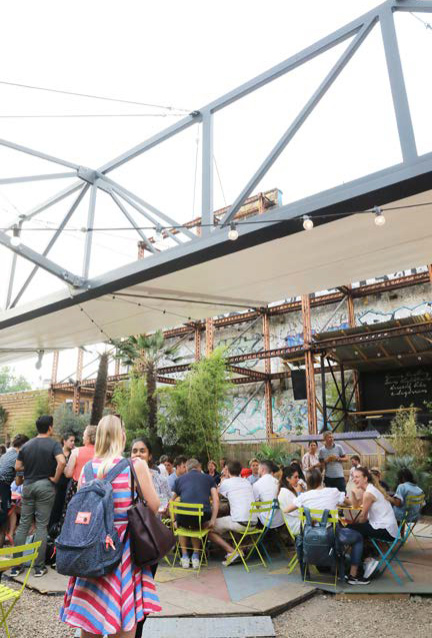PUBLIC AND COMMUNITY ENGAGEMENT
Had retail locations not faced the well-documented challenges of the last five to ten years, would these schemes have been possible?
The fact that Stockton Council were only able to secure the land for the new waterfront park with a CPO suggests not. It seems only public agencies are able to address the changing high street with a scheme of this type, which places both social and environmental agendas ahead of commercial gain. It’s unlikely that a private landlord would have demolished their own income-generating building to make way for a new park that is less likely to create the same financial return.
Even so, these schemes can come at a high price for councils. For the first twelve months following its return to the city, the Broadmarsh site cost £980,000 in management and security charges. Not an insignificant fee for a council already facing severe budgetary challenges.
For those councils without the potential spaces or finances to create such transformations, smaller experimental schemes can deliver positive impacts—and be the start of more ambitious plans.
Mercato Metropolitano (MM) is one such development. Launched in 2017 and with four locations across London and a forthcoming branch in Ilford, MM is a sustainable community market where each site offers different food retailers and community engagement activities. The organisation is underpinned by a ten point manifesto that addresses issues of circular design, outlines their inclusive economic benefits, and supports well-being. All plastic is banned on their sites, including any that visitors might carry with them. While taking an ultra-strict approach to waste and plastics, they are equally focused on food insecurity— including the recent increases in the cost of food—and the miles travelled that—through their suppliers—their urban farming focus seeks to address.
While Nottingham hopes to be the first UK city to reach net zero, Copenhagen is hoping to be first among all cities globally. The Danish capital has included urban food production in its net zero strategy, and aims to provide locally grown, organic produce for all of the city’s thousands of kitchens, which serve 70,000 meals a week to nursery schools and nursing homes. The city also hope this project will help to improve and support the health of its citizens and reduce healthcare needs. And for those not fed by these kitchens, the city regularly publishes their plant-based recipes on their website. Although Scandinavian cities have an established reputation for high standards of wellbeing and liveability, and for combining innovative and experimental proposals with ambitious government policies, this is no longer their preserve.


